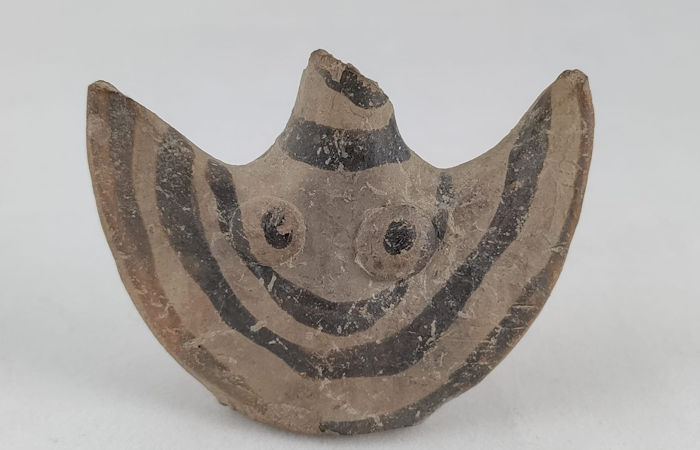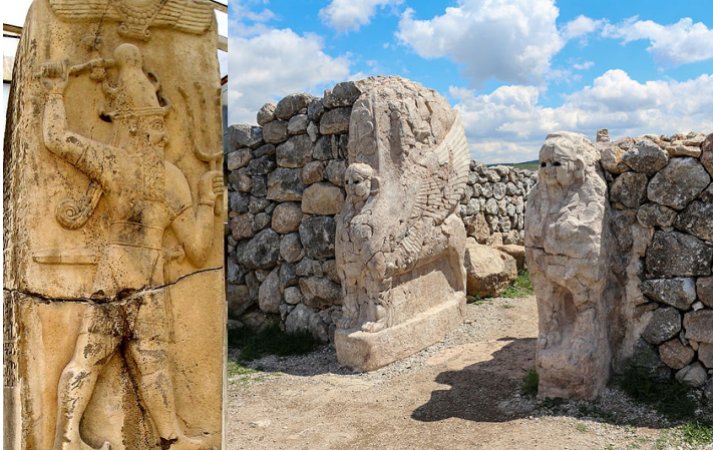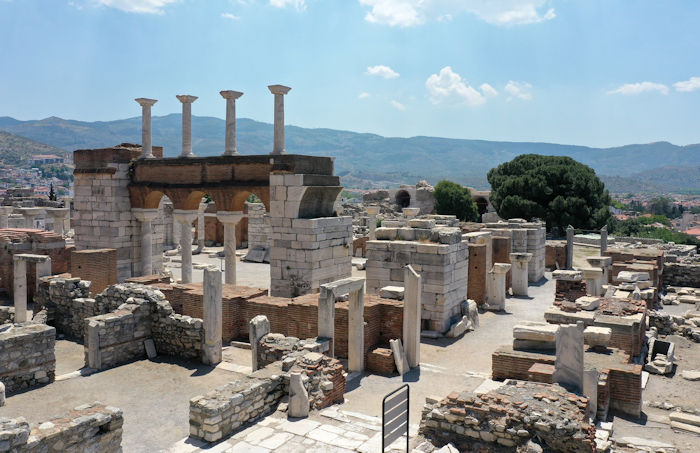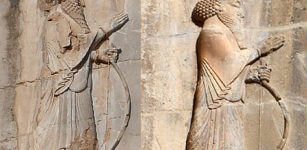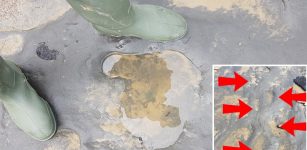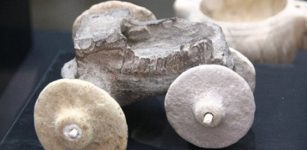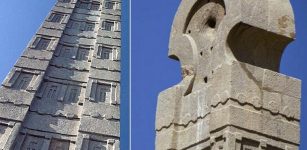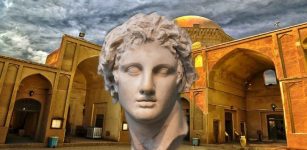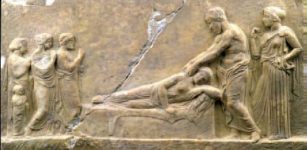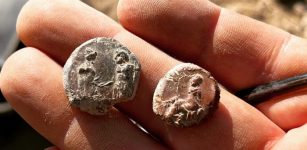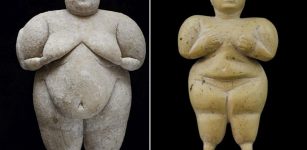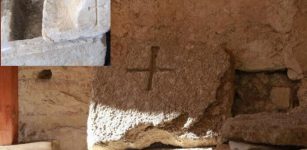3,200-Year-Old Mycenaean Statuette Sheds New Light On The Hittites
Jan Bartek - AncientPages.com - Archaeological excavations on Ayasuluk Hill in Turkey have led to the discovery of an interesting 3,200-year-old Mycenaean statuette that shed new light on the Hittites, one of the most powerful ancient civilizations that occupied the ancient region of Anatolia.
A 3,200-year-old Mycenaean statuette found at Ayasuluk Hill, Izmir, western Turkey. Credit: AA Photo
As discussed previously on AncientPages.com, "this long-gone culture has been of great interest to archaeologists and historians but unraveling the truth about the Hittites has been a difficult task. Although the civilization was over 4,000-years-old, it was first 1834 that a French scholar discovered ancient ruins that could be linked to the Hittites. Most of the ancient documents describing this culture that was once a rivaling threat to the ancient Egyptian kingdom were lost in the sand."
The recently unearthed 3,200-year-old statue is of great interest to scientists as the ancient artifact reveals a possible connection between Hittites and Mycenaean civilizations in the Ephesus region, which could change the perspective on the history of civilization in Western Anatolia during the Bronze Age.
The excavations were carried out under the direction of associate professor Sinan Mimaroglu of Hatay Mustafa Kemal University Art History Department. The Mycenaean statuette has no head and feet. It has a height and width of about 5 centimeters (1.97 inches) and was found along with other ceramics from the Bronze Age.
"Twenty-five experts in different disciplines such as art history, anthropology and genetics agreed as a result of the preliminary study that the Mycenaean statuette is strong evidence of a Bronze Age settlement on Ayasuluk Hill.
Left: Neo-Hittite storm god "Tarhunzas" in the Aleppo museum. Credit: Verity Cridland, Wikipedia, CC BY 2.0 - Right: Sphinx Gate, Hattusa, Turkey. Credit: Bernard Gagnon, Wikipedia, CC BY-SA 3.0
The statuette also strengthened the idea that Apasa, the capital of the Arzawa – a kingdom affiliated with the Hittites – was founded in the Seljuk and Ephesus regions, and that there was an interaction between the Hittites and Mycenaean civilizations in many areas such as trade," the Daily Sabah reports.
According to the excavation team, the Mycenaean statuette resembles ancient figurines unearthed in Troy, Limantepe, Kadikalesi, Miletus and Iasos.
"The quality of the clay from which such figurines are made generally shows where they came from. According to our first observations, the Mycenaean statuette found here suggests that it may have been imported material, that is, it might have come from the islands. As it was quite expensive to bring materials from abroad, it makes us think that the people of this region also had financial power.
A view from Ayasuluk Hill, Izmir, western Turkey. Credit: AA Photo
We discovered oysters in a particularly well-eaten state, as well. These findings suggest that the upper class could access this food and import goods from abroad. The Mycenaean figure and the oyster shells actually complement each other like pieces of a puzzle," Mimaroglu said.
As reported by the Daily Sabah, "the Mycenaean statuette dates back to 1200 B.C., according to the excavation head. As the material of this find suggests that it was imported, it also proves that there was a strong Bronze Age settlement in the region. And during the Bronze Age, there were important Hittite centers and settlements in Western Anatolia. Therefore, the statuette leads experts to the idea that Ayasuluk Hill is associated with Apasa, which was the capital city during the Hittite period.
See also: More Archaeology News
Despite the acceptance of many historians, Mimaroglu stated that they could not scientifically match Ayasuluk Hill and Apasa without a seal and added, “To be precise, we need to find seals that tell us the region was called Apasa in the past.”
Known as the first settlement in Ephesus, where there has been an uninterrupted settlement for approximately 9,000 years, Ayasuluk Hill is located in the city center of Selçuk, approximately 3 kilometers (1.86 miles) from today’s ancient city of Ephesus. "
Written by Jan Bartek - AncientPages.com Staff Writer

